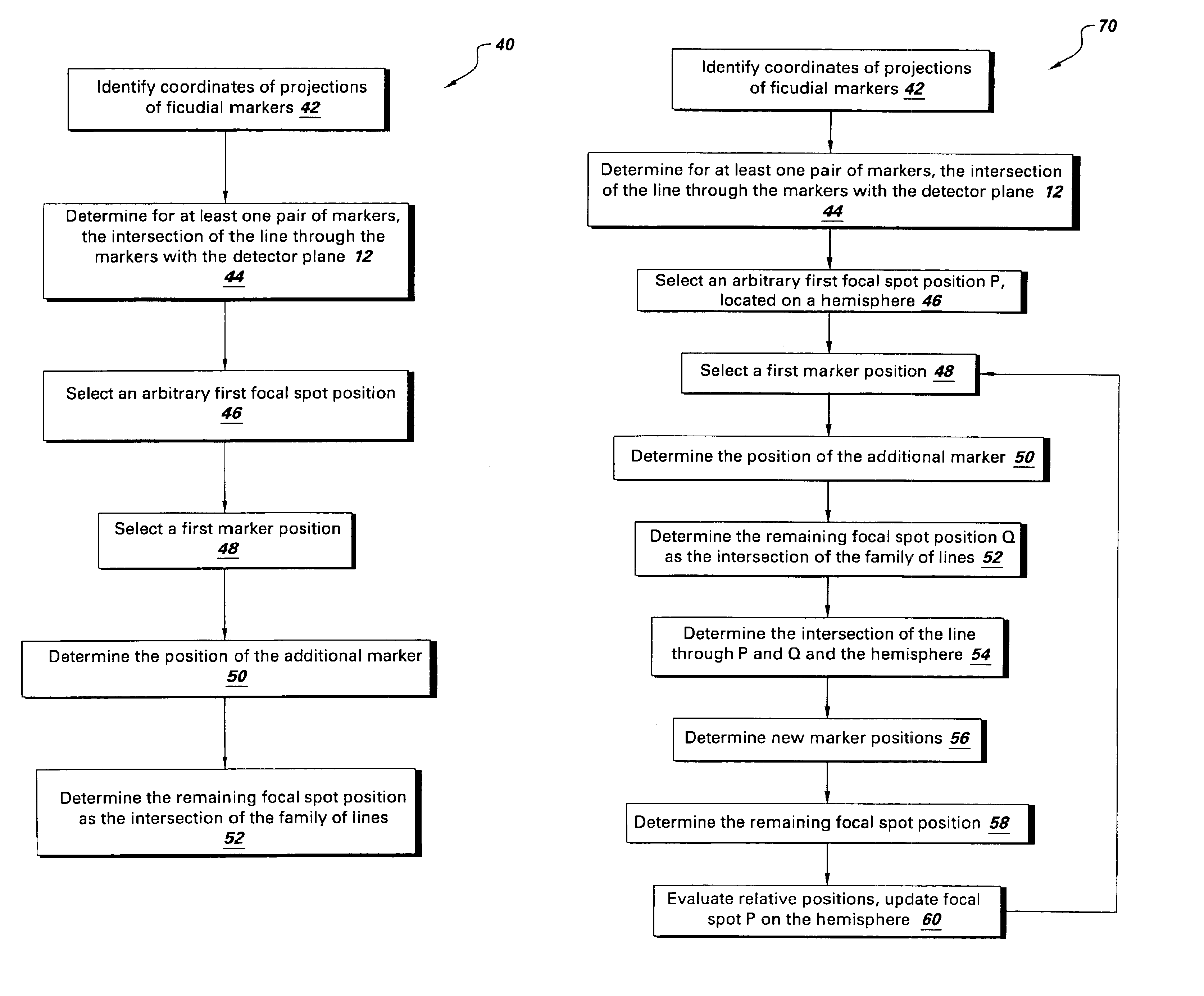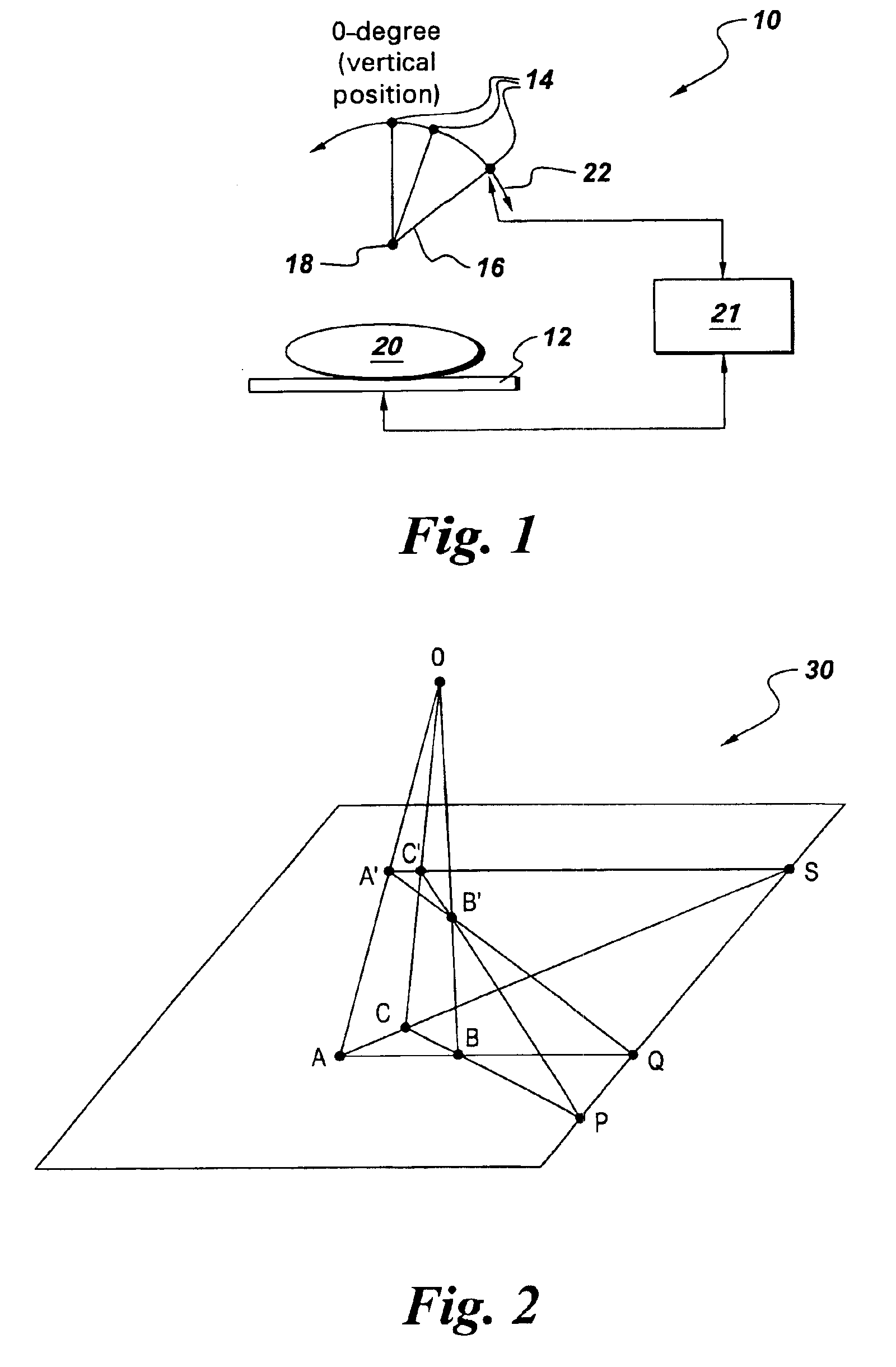Method, apparatus, and medium for calibration of tomosynthesis system geometry using fiducial markers with non-determined position
a technology of tomosynthesis system and calibration method, which is applied in the field of methods, apparatuses and media for calibration of tomosynthesis system geometry using fiducial markers with non-determined positions, can solve the problems of inability to carry over other conventional methods to determining tomosynthesis system geometry, inability to image a patient, and inability to achieve the effect of ensuring the quality of reconstructed images
- Summary
- Abstract
- Description
- Claims
- Application Information
AI Technical Summary
Benefits of technology
Problems solved by technology
Method used
Image
Examples
Embodiment Construction
[0023]As used herein, the terms “adapted to”, “configured to” and the like refer to the components that are arranged to provide a desired function as might be know to one skilled in the art. For example, in the situation of the processing of signals, data and the like, the term “adapted to” refers to a component such as, for example, a preprogrammed digital computer, an application-specific integrated circuit (ASIC), or other electronic, analog or optical computing device that can be prepared to process input signals in accordance with a desired algorithm to provide a desired output signal. In the situation of a mechanical or electromechanical device, the term “adapted to” refers to the components, for example, being assembled, connected or disposed in an operational relationship so as to provide a desired functionality, make up or arrangement in a device.
[0024]Throughout the description of the present invention, reference is made to the x-ray source being “above the detector”, or a...
PUM
 Login to View More
Login to View More Abstract
Description
Claims
Application Information
 Login to View More
Login to View More - R&D
- Intellectual Property
- Life Sciences
- Materials
- Tech Scout
- Unparalleled Data Quality
- Higher Quality Content
- 60% Fewer Hallucinations
Browse by: Latest US Patents, China's latest patents, Technical Efficacy Thesaurus, Application Domain, Technology Topic, Popular Technical Reports.
© 2025 PatSnap. All rights reserved.Legal|Privacy policy|Modern Slavery Act Transparency Statement|Sitemap|About US| Contact US: help@patsnap.com



